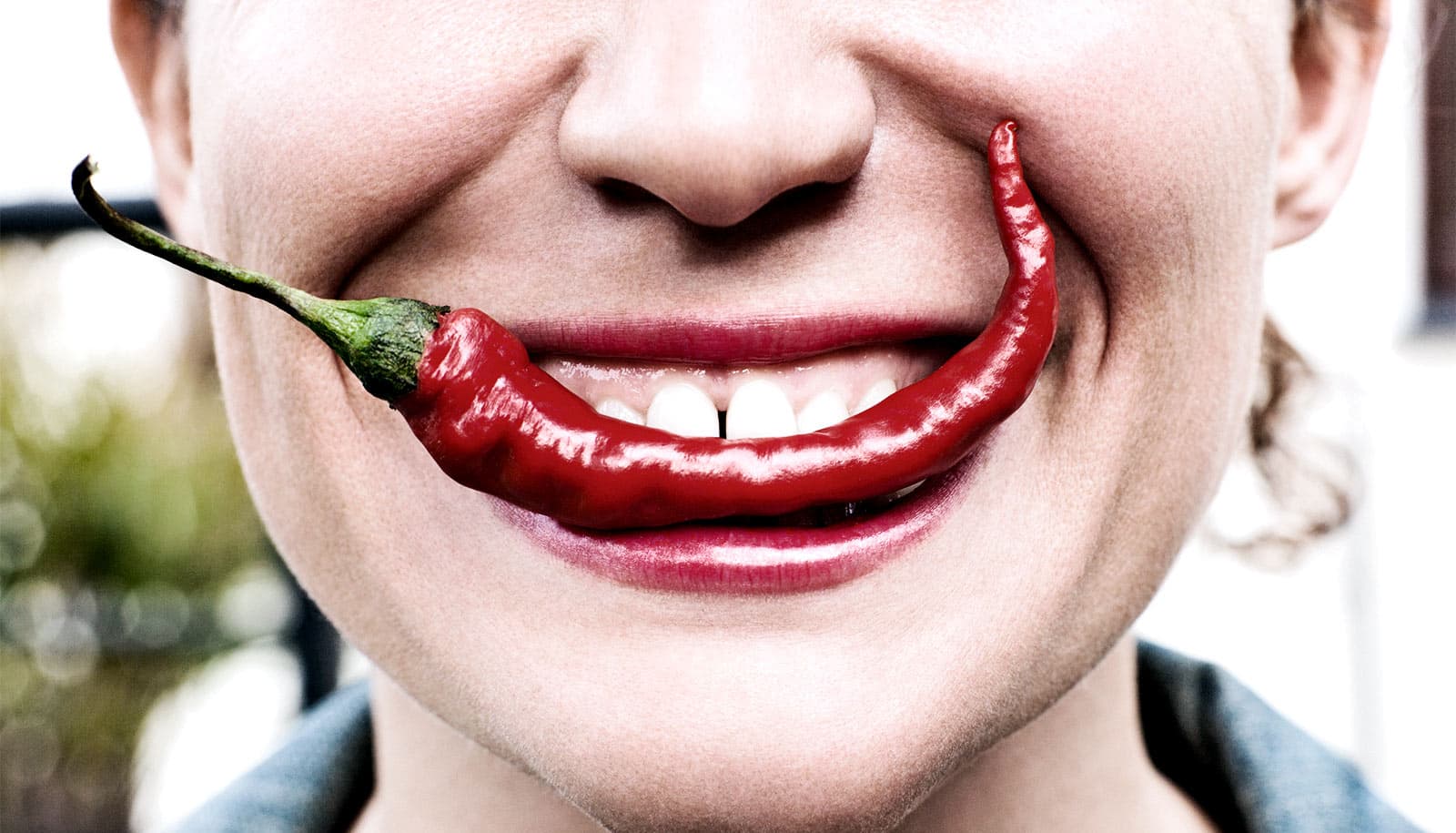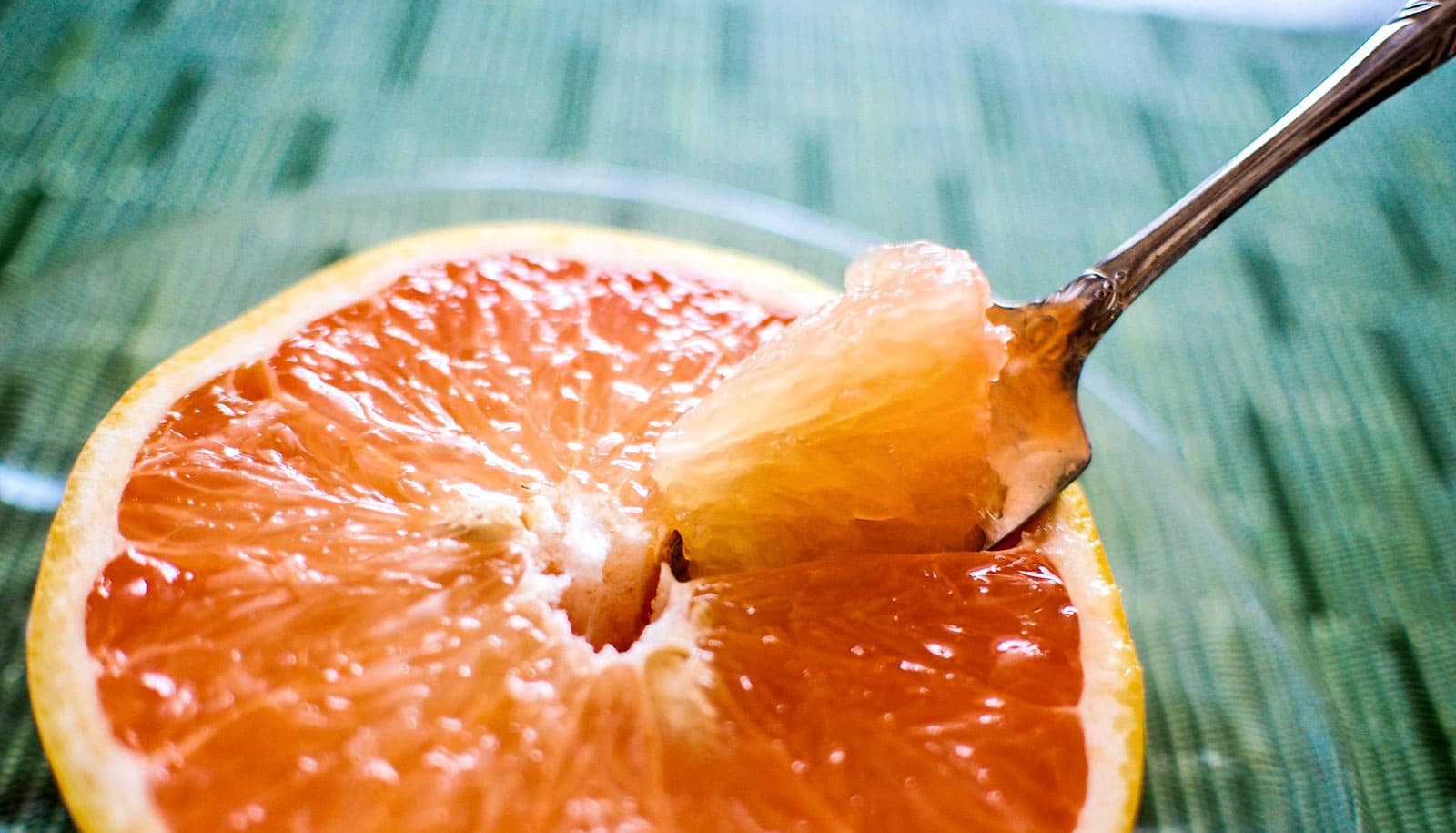If you order food you think is too “hot,” you should choose milk to reduce the burn, report researchers, who also suggest it does not matter if it is whole or skim.
The research originated as an effort to identify a beverage to clear the palates of participants in tasting studies involving capsaicin. An extract from chili peppers, capsaicin is considered an irritant because it causes warming and burning sensations.
“We were interested in giving capsaicin solutions to many test participants and we were concerned with the lingering burn at the end of an experiment,” says John Hayes, associate professor of food science at Penn State and director of the university’s Sensory Evaluation Center. “Initially, one of our undergrad researchers wanted to figure out the best way to cut the burn for people who found our samples to be too intense.”
Widespread consumption of chili peppers and foods such as wings spiced with sriracha and hot sauce show that many people enjoy this burn, Hayes adds. But these sensations also can be overwhelming. While folklore exists on the ability of specific beverages to mitigate capsaicin burn, quantitative data to support these claims are lacking.
Spicy food showdown
The researchers looked at five beverages and involved 72 people—42 women and 30 men. Participants drank spicy Bloody Mary mix, containing capsaicin. Immediately after swallowing, they rated the initial burn.
Then, in subsequent separate trials, they drank purified water, cola, cherry-flavored Kool-Aid, seltzer water, non-alcoholic beer, skim milk, and whole milk. Participants continued to rate perceived burn every 10 seconds for two minutes. There were eight trials. Seven included one of the test beverages and one trial did not include a test beverage.
Participants rated the initial burn of the spicy Bloody Mary mix, on average, below “strong” but above “moderate” and then, as it continued to decay over the two minutes of the tests, a mean just above “weak,” according to lead researcher Alissa Nolden. All beverages significantly reduced the burn of the mix, but the researchers saw largest reductions in burn for whole milk, skim milk, and Kool-Aid.
More work is needed to determine how these beverages reduce burn, notes Nolden, a doctoral student in food science when she conducted the research, now an assistant professor in the food science department at the University of Massachusetts. She suspects it is related to how capsaicin reacts in the presence of fat, protein, and sugar.
“We weren’t surprised that our data suggest milk is the best choice to mitigate burn, but we didn’t expect skim milk to be as effective at reducing the burn as whole milk,” she says. “That appears to mean that the fat context of the beverage is not the critical factor and suggests the presence of protein may be more relevant than lipid content.”
Following the completion of all the trials, the participants answered two questions: “How often do you consume spicy food?” and “Do you like spicy food?” Researchers had hoped to see some correlation between participants’ perception of the burn from capsaicin and their exposure to spicy food, Nolden says. But no such relationship emerged from the study.
Poor performers
The findings of the research might surprise some spicy foods consumers, but they shouldn’t, Nolden says.
“Beverages with carbonation such as beer, soda, and seltzer water predictably performed poorly at reducing the burn of capsaicin,” she says. “And if the beer tested would have contained alcohol, it would have been even worse because ethanol amplifies the sensation.”
In the case of Kool-Aid, Nolden and her colleagues do not think that the drink removes the capsaicin but rather overwhelms it with a sensation of sweet.
The study was novel, Nolden believes, because it incorporated products found on food-market shelves, making it more user friendly.
“Traditionally, in our work, we use capsaicin and water for research like this, but we wanted to use something more realistic and applicable to consumers, so we chose spicy Bloody Mary mix,” she says. “That is what I think was really cool about this project—all the test beverages are commercially available, too.”
The research appears in Physiology and Behavior. The National Institutes of Health and the US Department of Agriculture’s National Institute of Food and Agriculture supported this work.
Source: Penn State



